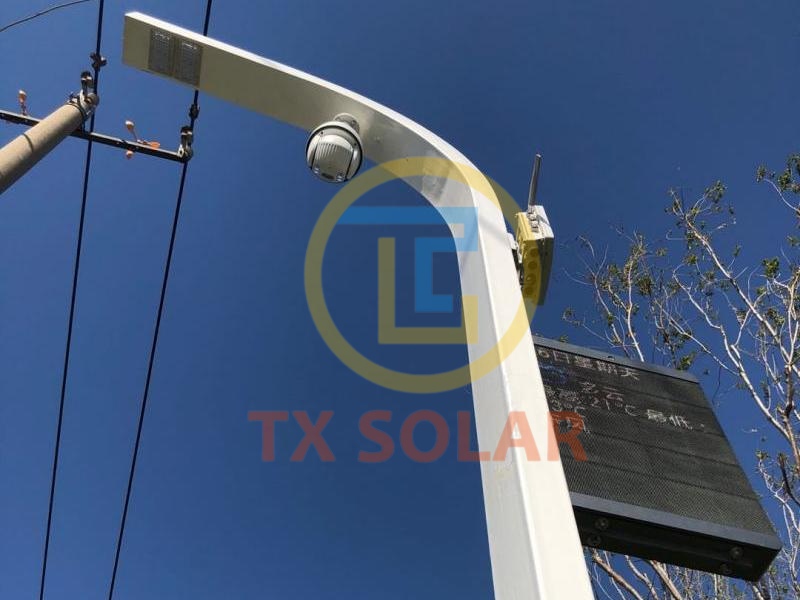In the process of building smart cities, smart street lights have become an important part of urban infrastructure with their multiple functions. From daily lighting to environmental data collection, from traffic diversion to information interaction, smart street lights participate in the operation and management of the city in all aspects. However, in the face of severe weather such as heavy rain, strong winds, and blizzards, the stable operation of smart street lights faces severe tests. Below, smart street light manufacturer TIANXIANG will lead everyone to explore in depth how to deal with bad weather.
Build a solid hardware protection foundation
In the design stage, a comprehensive protection design for smart street lights is the basis for dealing with bad weather. First of all, in terms of waterproofing, accessories such as sealing strips and waterproof breathable valves are used to seal the lamp body, sensors, communication modules and other equipment to ensure that rainwater cannot invade. For example, some smart street lights can effectively resist the invasion of heavy rain by adopting IP67 and above waterproof level designs. In terms of windproof design, according to the wind force level standards in different regions, the height, diameter and wall thickness of the lamp pole are reasonably designed to enhance the wind resistance of the lamp pole. At the same time, optimize the structure of the lamp pole, adopt stable structural forms such as triangles and polygons, reduce wind resistance, and prevent the lamp pole from being blown down in strong winds. In terms of dustproof design, install dustproof nets, filters and other devices to prevent sand and dust from entering the equipment and avoid equipment failure due to sand and dust accumulation. In addition, the installation location of street lights also needs to be scientifically planned to avoid wind outlets and areas prone to water accumulation, so as to reduce the impact of bad weather on smart street lights.
Improve operational adaptability
With the help of advanced technical means, smart street lights can achieve adaptive adjustment in bad weather to ensure their own stable operation. In terms of lighting, the brightness of street lights is automatically adjusted according to weather changes through the intelligent dimming system. In weather with low visibility such as heavy rain and fog, the brightness of street lights is automatically increased to enhance the lighting effect and provide a clear view for pedestrians and vehicles. In terms of communication, redundant communication technology is adopted, such as equipping multiple communication modules at the same time. When one communication mode is disturbed by bad weather, it can automatically switch to other communication modes to ensure the continuity of data transmission. In addition, sensors are used to monitor the operating status of street lights in real time. Once an abnormality is detected, such as the tilt of the light pole or the temperature of the equipment is too high, an early warning message is immediately sent to the management platform so that timely measures can be taken to repair it. For example, when encountering strong winds, the sensor detects that the shaking of the light pole exceeds the preset threshold. The management platform can remotely control the street light to reduce power, reduce the burden on the light pole, and prevent the light pole from being blown down.
Ensure the continuous stability of street lights
Daily maintenance work is an important guarantee to ensure the normal operation of smart street lights in bad weather. Establish a sound inspection system, conduct regular comprehensive inspections of smart street lights, and promptly discover and repair potential problems. Before the arrival of bad weather, conduct special inspections of street lights, focusing on whether the waterproof, windproof, and dustproof devices are intact to ensure that the street lights are in the best operating state. After the bad weather, quickly conduct a post-disaster inspection of the street lights and replace and repair the damaged equipment in a timely manner. At the same time, use big data analysis technology to analyze the operating data of smart street lights in different bad weather conditions, summarize experience and lessons, continuously optimize the design and management strategies of street lights, and improve the ability of smart street lights to cope with bad weather.
We provide one-stop service from early stage scheme design, construction drawing deepening, production and manufacturing, on-site installation, to later maintenance. If you need it, please contact TIANXIANG, the smart street light manufacturer, immediately!
Post time: May-07-2025

